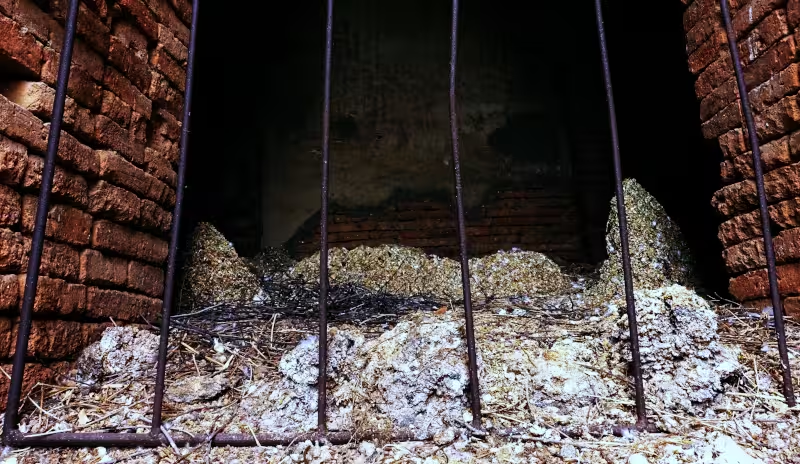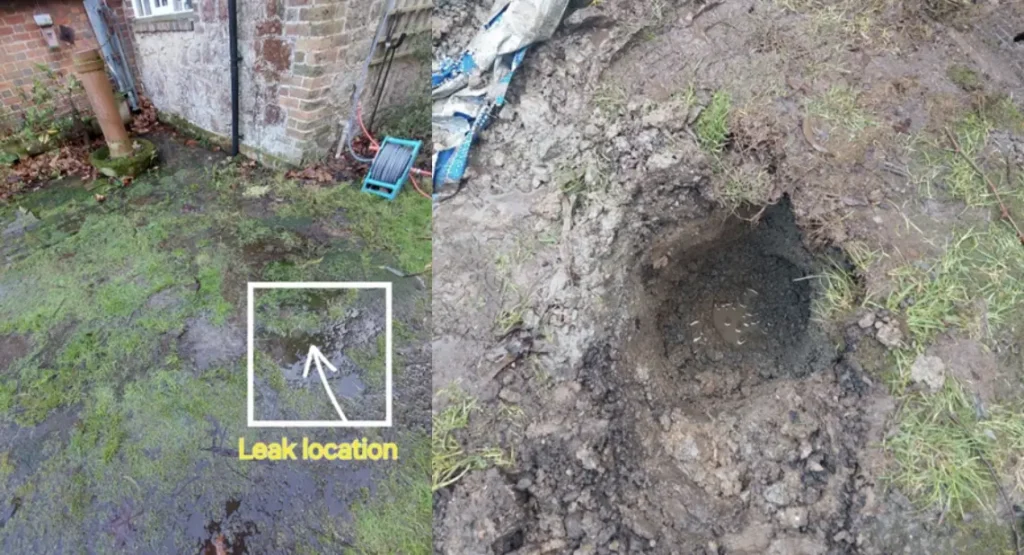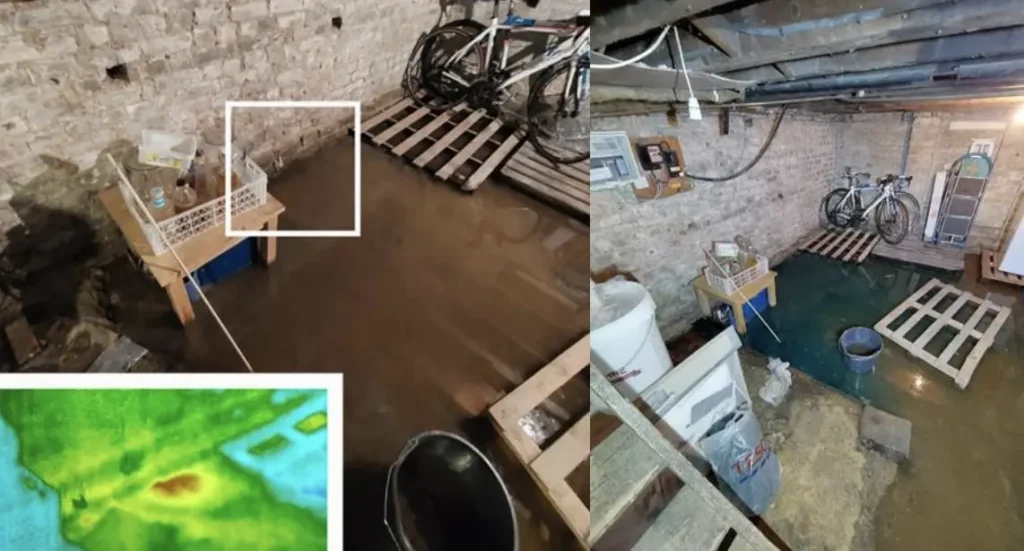The Problem
A property in south-west London experienced significant flooding in its basement, requiring a professional flooded basement clean-up service. The cause of water ingress was unclear, with potential issues ranging from a faulty sump pump to a breach in the damp-proof membrane.
Key Challenges:
Extensive Flooding:
- Water had penetrated most areas of the basement, saturating the floor structure and insulation layers.
Complex Floor Construction:
- The basement floor featured multiple layers, including a concrete slab, delta cavity drainage membrane, closed-cell insulation, wet underfloor heating, sand-cement screed.
Trapped Moisture:
- Initial investigations revealed moisture was trapped between the membrane and insulation, making traditional drying methods ineffective.
Flooded basements are a common issue, with 1 in 6 homes in England at risk of flooding (Environment Agency). Without prompt and effective clean-up, residual moisture can lead to mould growth and structural damage.
The Solution
To restore the basement effectively and minimise disruption, we implemented a specialist pressure drying method tailored to the property’s construction.
Step 1: Assessment and Preparation
- Conducted an in-depth inspection, including the use of humidity probes to measure moisture at various depths. Probes were left in place for 24 hours to ensure accurate readings.
- Identified high moisture levels trapped within the floor layers, confirming the need for advanced drying techniques.
Step 2: Preparing for Drying
- Basement Clearance: Removed all stored materials and debris to ensure an unobstructed drying process.
- Inspection and Marking: Used thermal imaging cameras and pipe detectors to map safe drilling points for installing drying equipment.
- Drainage of Heating System: Fully drained the underfloor heating system to prevent further water damage.
Step 3: Flood Damage Drying
- Drilled 25mm holes strategically in affected rooms to allow for injection drying.
- Installed multiple injection drying systems to deliver dry air into the floor layers.
- Removed thermal insulation manually where necessary to prevent damage to the damp-proof membrane.
- Set up desiccant dehumidifiers, turbines, and condensing dehumidifiers to create a controlled drying environment:
Desiccants: Produced heat and absorbed moisture from the air.
Condensing Dehumidifiers: Captured water vapour and converted it to liquid for easy disposal.
Step 4: Remote Monitoring
- Installed a remote monitoring system to track progress and ensure optimal drying conditions.
- Eliminated unnecessary site visits by remotely adjusting equipment as needed.
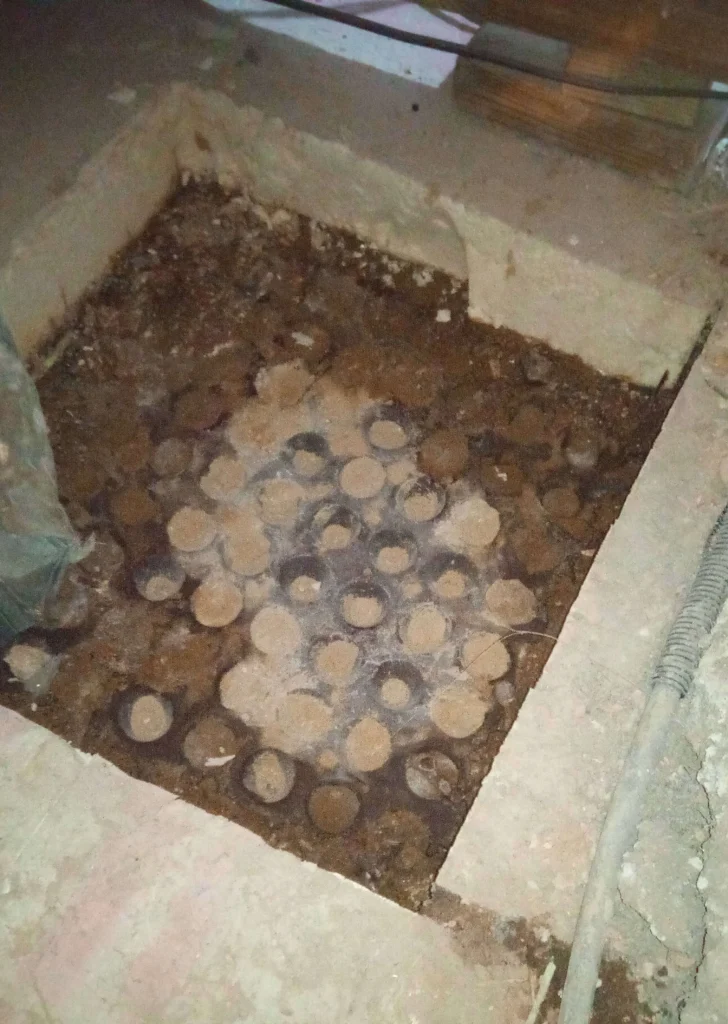
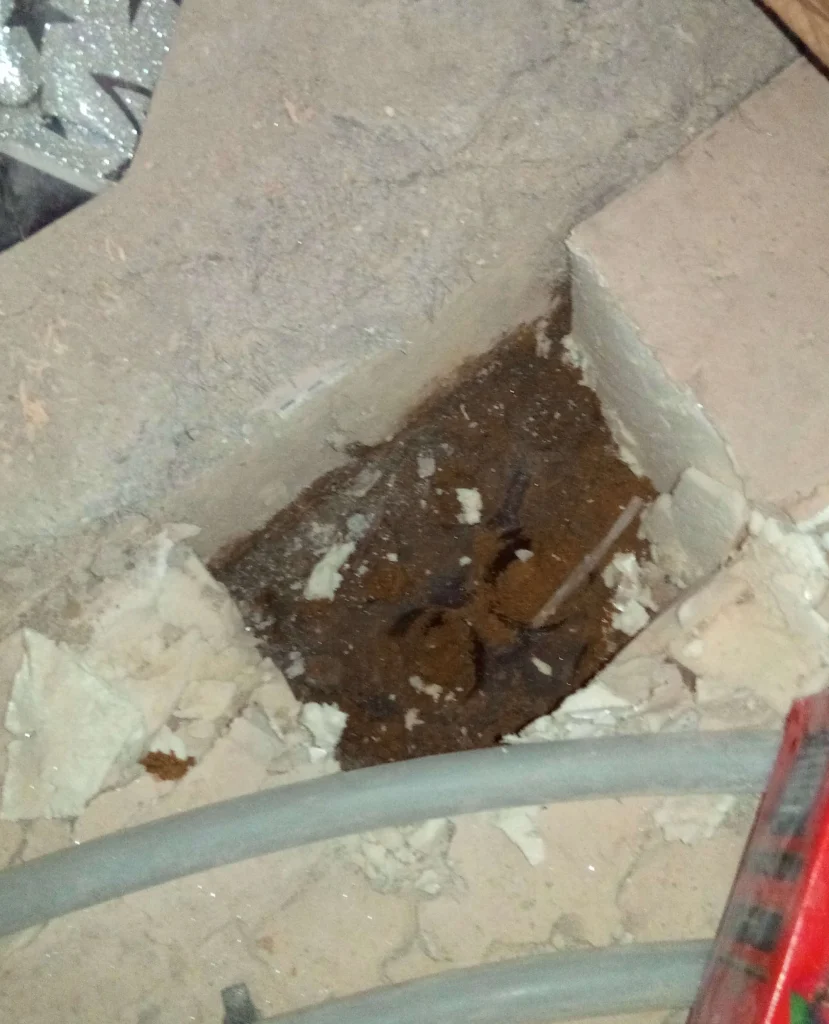
The Result
Our meticulous approach to flood damage clean-up ensured the basement was restored efficiently and effectively, leaving it ready for future use.
Key Outcomes:
Thorough Water Removal:
- Successfully dried the trapped moisture within five weeks, preventing further structural damage and mould growth
Minimised Disruption:
- Used advanced pressure drying techniques to avoid extensive strip-out work, preserving the basement’s damp-proof membrane.
Cost-Effective Solution:
- Remote monitoring reduced on-site visits, saving time and costs while maintaining high service standards.
Client Benefits:
- A safe, dry basement restored to pre-flood conditions.
- Long-term prevention of mould and structural issues.
- Expert recommendations for maintaining basement moisture control in the future.
Did You Know?
Flood damage can lead to mould growth within 48 hours if not addressed promptly, according to the Property Care Association. Professional clean-up and drying techniques can save homeowners thousands in long-term repairs.
If you’re dealing with a flooded basement, talk to us for reliable and efficient flooded basement clean-up services. We’ll help you restore your property and protect it from future water damage.
